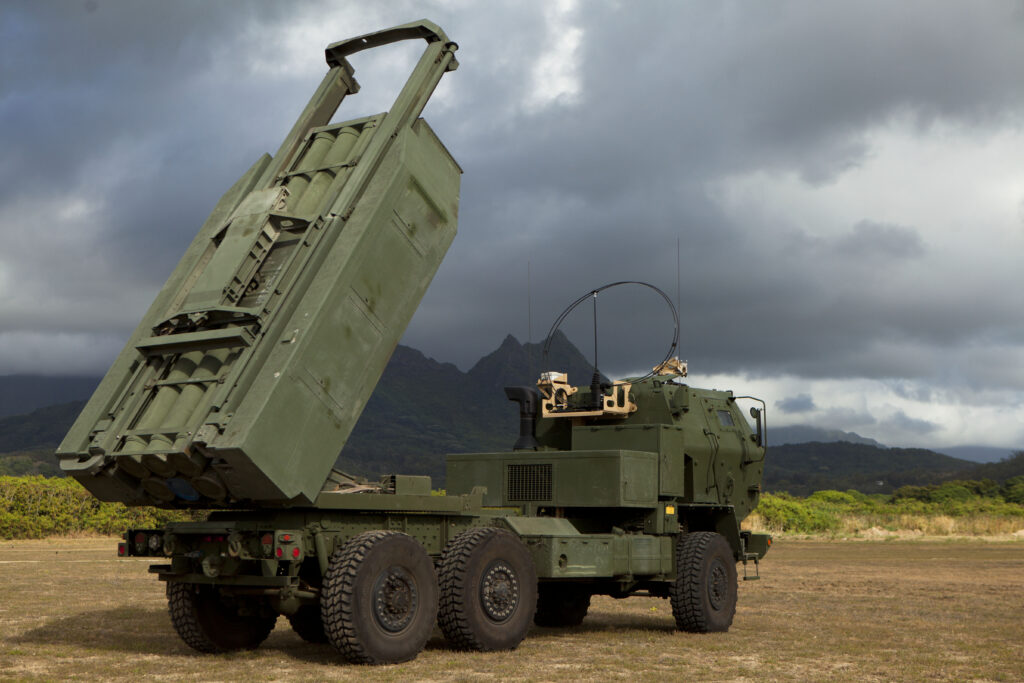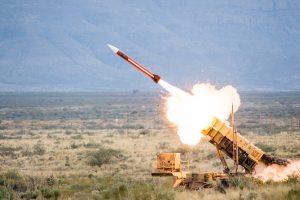Poland Struggles With HIMARS Buy
Posted on

A Marine Corps HIMARS (High Mobility Artillery Rocket System)
WASHINGTON: The Polish government is working to renegotiate an arms deal approved by the State Department last year for the U.S.-made HIMARS long-range rocket artillery system after experiencing some sticker shock when seeing the final price tag.
The $250 million package for the rocket launcher along with guided warheads and other tactical missiles was seen as a way for Poland and NATO to push back against the Russian military buildup in neighboring Kaliningrad, which gives Moscow the ability to track and knock down Polish aircraft over Polish airspace. The HIMARS, Polish officials told me, would give them the ability to hit targets at a longer range if their aircraft were unable to fly.
But almost six months on, the deal remains a work in progress even as the Trump administration has kicked off a new initiative to eliminate red tape, speed up timelines, and cut costs for sales of U.S. military equipment to allies overseas.
Maj. Gen. Cezary Wiśniewski — a former F-16 pilot now serving as Poland’s Defense Attache to the United States — told me during a recent conversation at the Polish consulate here, his government very much wants to move forward with the HIMARS deal, but can’t at the current price. The Polish government and HIMARS-maker Lockheed Martin continue to hash out possibilities for making the deal happen, but neither side would, for the moment, give much insight on how to bring costs down.
Wiśniewski said that the mobile rocket artillery system remains a priority due to the continued Russian buildup in Kaliningrad, the Russian exclave on the Baltic Sea that allows Russian radars and S-400 missile systems to reach deep inside Polish territory, essentially taking away any home field advantage Polish pilots might have in the event of a conflict.
Crucially, the deal also supports a Direct Commercial Sale (DCS) between Lockheed and PGZ, Poland’s state-run defense group, which is the prime contractor in Poland.
A spokesperson for Lockheed told me that the company “is fully committed” to working the deal, and “has remained engaged and flexible with PGZ, ready to finalize a [missile defense] offering that will provide commonality and interoperability with U.S. forces and NATO partners.”
One thing that Warsaw wants out of the deal are offsets, which would allow PGZ to build components in Poland.
Just last month, as part of inking the largest arms deal in Polish history — a $4.75 billion contract for Patriot air defense systems and other associated equipment — Lockheed, Raytheon, and Northrop Grumman agreed to offsets worth about $280 million.
Negotiations over Phase II of that Patriot program began on April 16, and include talks about buying a 360 degree radar, and additional offsets.

Patriot launcher
“We would like to procure the same 360 degree radar that is under development by the U.S. Army,” Wiśniewski said. “It has not been selected by the Army, yet so we are waiting. We would like to use the same system so the integration and sustainment costs would be lower.”
But the Polish government is also looking to shift more work to its own defense industry. “We expect the Phase II would provide us more technology transfer than Phase I,” Wiśniewski said, “we’re looking for more technology transfer for our industry.”
One key element of the current negotiations is Raytheon’s low-cost SkyCeptor interceptor missile, which would be used in a nascent short-range interceptor program called Narew, which Warsaw wants to build locally, according to Wiśniewski.
The general described a gap in the budding Polish air defense ecosystem between shoulder-fired MANPADS and the Patriot, a gap that will be filled by Narew, which his government considers crucial in bulking up its borders with Kaliningrad and providing the NATO alliance with more ground punch.
“It helps us to deter,” he said.
Analysis haven’t been surprised by the Polish interest in more air defenses, and its willingness to spend a lot of money to acquire the. “I think this is a natural case of Poland looking to balance Russian military modernization and leverage their sizable defense budget to adjust for a new generation of capabilities deployed in Kaliningrad,” said Michael Kofman, an expert on the Russian military at CNA. “Of course there is also the political aspect to defense procurement, seeking to leverage defense spending as another instrument to further build ties with the United States,” he told me.
The original HIMARS announcement in November was part of a wave of big buys — including September’s $1.25 billion agreement to sell the HIMARS and Guided Multiple Launch Rocket Systems to Romania, who also agreed on a deal for seven Patriot Configuration 3 units in November — that signaled to Moscow that the alliance was was meeting Russian buildups in Kaliningrad and Crimea.
Any HIMARS deal with Poland would be significant for NATO, as other than Romania, the only foreign buyers have been Singapore and the United Arab Emirates, while Qatar has received authorization to buy the system.
The government in Bucharest announced during in the summer of 2017 that it planned to buy HIMARS, along with 36 F-16 fighter jets by 2022, part of a long-term pan to lay out $11.6 billion on military procurements between 2017 through 202
Subscribe to our newsletter
Promotions, new products and sales. Directly to your inbox.
